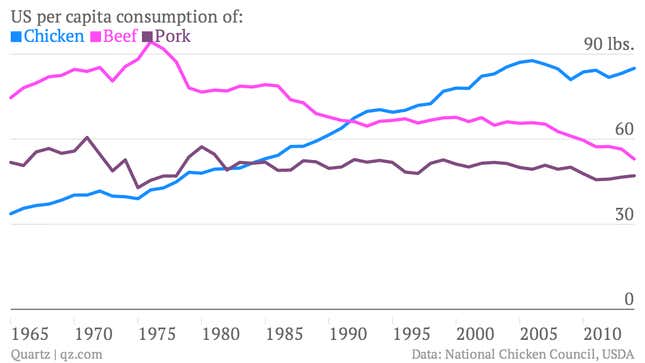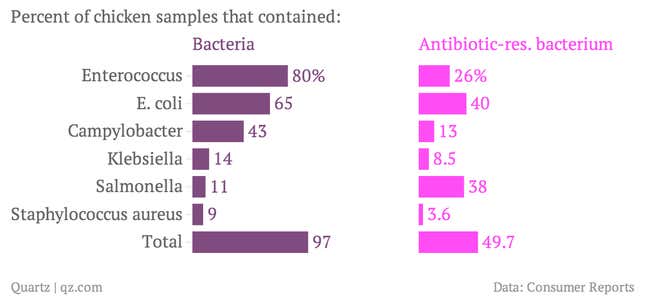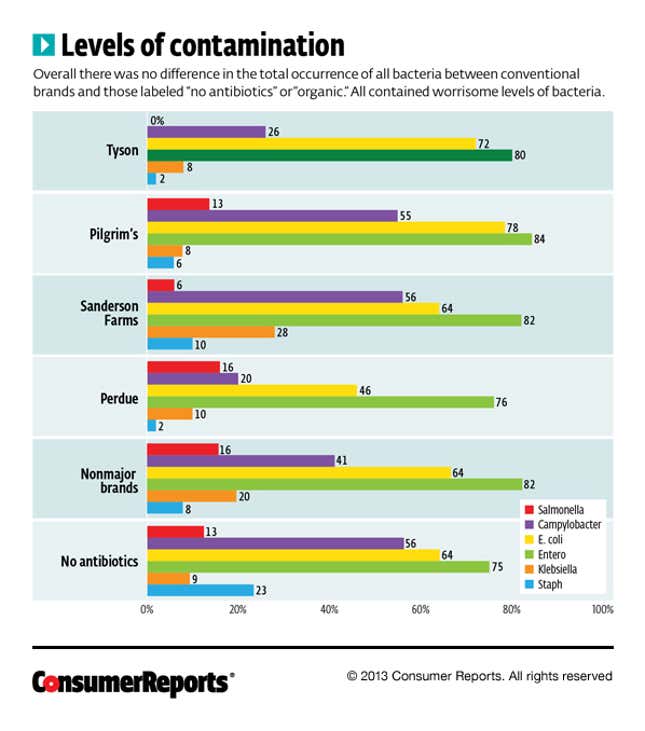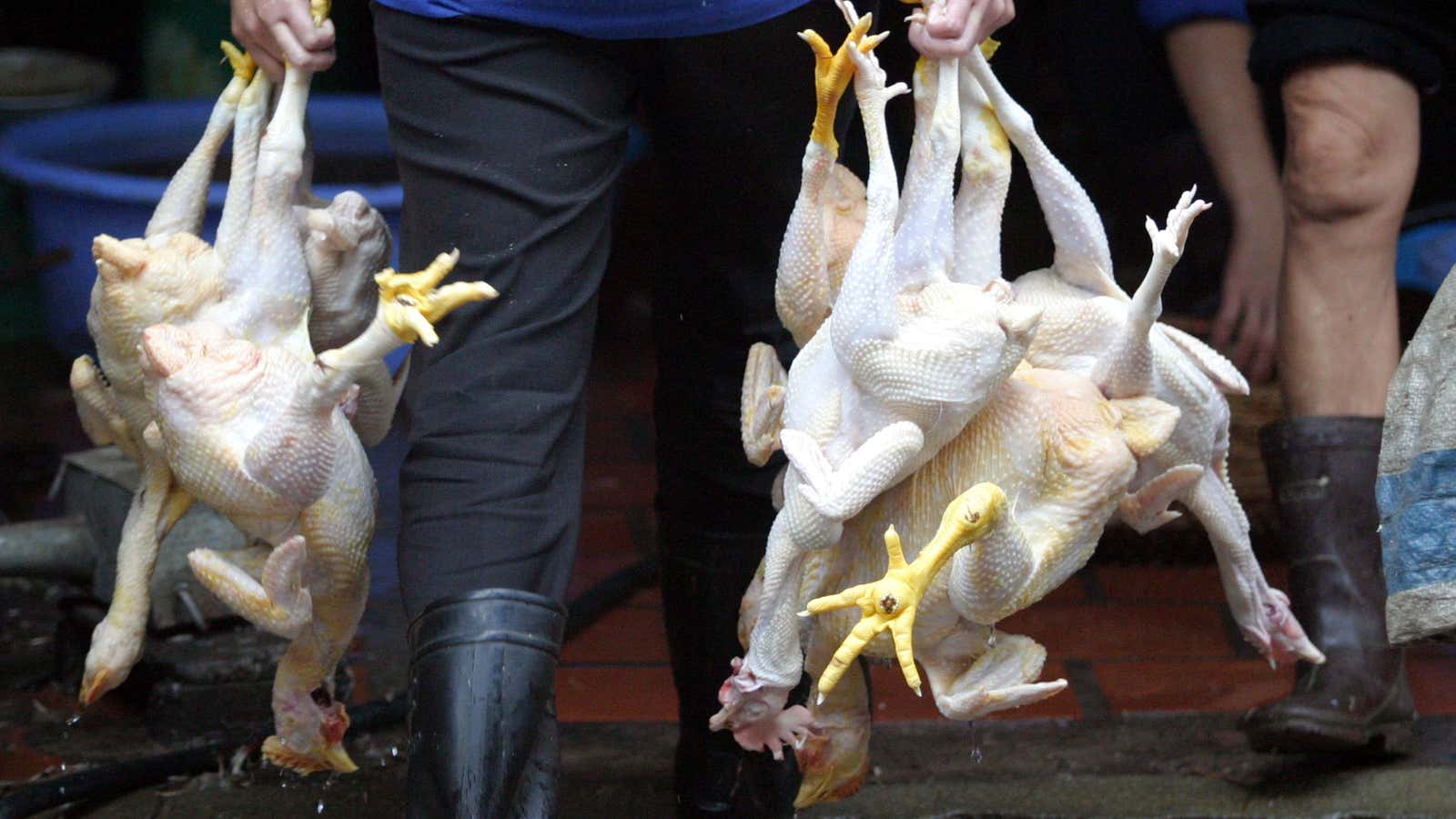Americans have been trying hard to eat more healthily. Three decades of bad news about red meat and pork—worries about fat, cholesterol and cancer, for example—mean they’re passing up steaks, hot dogs and hamburgers more often. But they’re clearly not giving up meat altogether: they’re eating more chicken instead.

But chicken might not necessarily be a safer choice than other meats. A new study by Consumer Reports, a product review magazine, adds to the mounting concerns that chicken consumed in the US is teeming with harmful bacteria. Around half of the 300-plus raw chicken breasts it purchased in stores in 26 US states contained at least one type of bacteria that was resistant to three or more leading antibiotics.

And more than half of the samples also tested positive for fecal contaminants, which contain harmful bacteria (overall, 97% of the samples contained “bacteria that could make you sick”).
The prevalence of antibiotic-resistant bacteria strains found in the Consumer Reports study is especially alarming, since these “superbugs,” as they’re called, cause at least 23,000 deaths in the US each year.
The consequences of superbug outbreaks are often more severe than those involving regular bacteria. A salmonella outbreak linked to Foster Farms, the US’s sixth-biggest chicken producer, which sickened 416 people this year, required twice the usual rate of hospitalization, says the Center for Disease Control and Prevention.
That said, the bacteria found in the study doesn’t always sicken people. For instance, even though E. coli has a nasty reputation for causing food poisoning, all but a few strains are harmless. However, 11% of the chicken samples contained an E. coli strain that causes urinary-tract infections. And two bacteria types—campylobacter and salmonella—are much more likely to cause diarrhea and vomiting, says Food Safety News.
How can you avoid these superbugs, and still enjoy chicken breasts?
Hard to say. None of the brands and types of chicken tested (pdf) contained bacteria at significantly lower rates. There was no significant difference in the amount of bacteria types between regular chicken breasts and those labeled “no antibiotics” or “organic.”

“At the moment, the only way to protect yourself from becoming sick is to remain vigilant about safe handling and cooking,” says Dr. Urvashi Rangan, executive director of the food safety center for Consumer Reports. Handling contaminated raw chicken can transfer bacteria to kitchen surfaces where they can live for days.
The good news is the US government is planning to ban the use of “medically important” antibiotics in food animals. Pumping animals with antibiotics to make them grow or keep them from being sickened by unsanitary cage conditions helps bacteria develop resistance to antibiotics.
But here’s the bad news: The US Department of Agriculture may soon allow poultry plants to process 175 chickens a minute, up from the current maximum of 140, says Consumer Reports. That’s likely to increase the presence of feces on raw chicken. It may also unload certain food inspection duties from the federal government onto individual companies, which would leave the task of reporting unsanitary conditions to poultry company employees.
